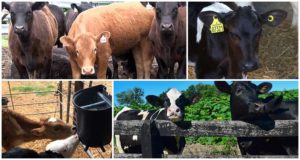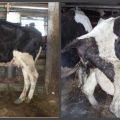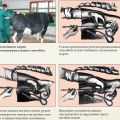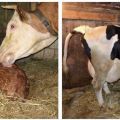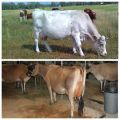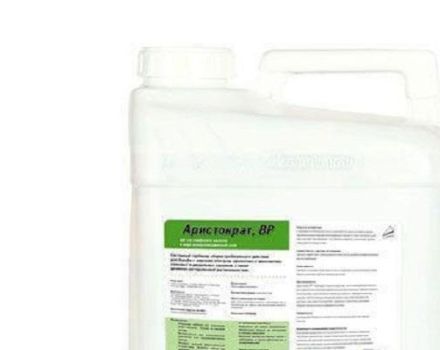Causes of discharge in a pregnant cow, the norm and what to do when mucus appears
The owners usually observe the condition of a pregnant cow very carefully, because the health of an adult animal and a calf depends on it. Novice farmers need to know when and what kind of discharge from pregnant cows is the norm, and at what time they should urgently seek veterinary help in order to prevent fetal death and the development of gynecological diseases in the animal.
Causes of transparent discharge
There are several reasons for clear discharge in a cow, in which there are no impurities of pus or blood, they occur before pregnancy and at different periods of pregnancy.
Discharge rate
Normally, mucus does not have an unpleasant odor, yellow, greenish or brown tint.
- The clear, lingering discharge that appears at the initial stage of estrus shows that everything is in order with the cow, she is healthy and ready for fertilization. This discharge has a characteristic odor.
- In 80% of animals, transparent mucus begins to be secreted 1.5-2 months after insemination. Sticky discharge is normal for the animal and indicates pregnancy.
- For the last time during pregnancy, clear discharge in cows is observed 10-20 hours before the calf appears. The mucus goes to lubricate the birth canal and facilitate calving.
These conditions are the physiological norm for the animal and do not require a veterinary examination.
Possible deviations
Call a veterinarian if mucus is brown, green, yellow, or mixed with blood or pus. A brown, green, or yellow discharge is a sign of vaginitis or endometritis. Copious mucus with bloody streaks or having a yellowish tinge is the first sign of abortion.
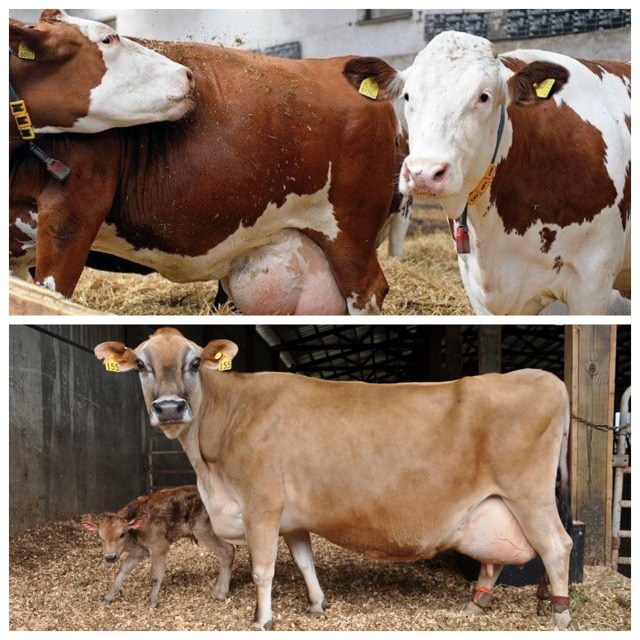
Vaginitis often manifests itself after insemination, endometritis (inflammation of the inner layer lining the uterus of a cow) - during pregnancy, after calving. These diseases are characterized by stretching mucus with a pungent unpleasant odor.
The cause of gynecological diseases of cows is sometimes dampness and cold in the barn, vitamin deficiency of the animal.
First aid for unusual discharge
You should transfer the animal to a separate stall, on a clean, dry bedding, call a veterinarian. You can wash the vagina with a pinkish solution of potassium permanganate (potassium permanganate).To do this, it is convenient to use a rubber heating pad with a long hose (Esmarch mug), they buy it at a regular or veterinary pharmacy. Instead of potassium permanganate, a solution of furacilin is used. Vaginal or rectal suppositories (suppositories) with an antibacterial effect (for example, synthomycin) are administered.
After the examination, the veterinarian will prescribe tests and treatment to relieve inflammation and eliminate discharge.
Prevention of gynecological diseases
Animals should be kept in dry, warm and clean rooms. Cows are regularly examined by a veterinarian, prescribes treatment at the first signs of illness, observes animals from insemination to calving, and examines them after birth. If insemination is done naturally, the bull is examined for inflammatory conditions.
When diagnosing endometritis, symptomatic treatment is carried out in the presence of exacerbations.
Animal nutrition should be balanced, it includes vitamin and mineral complexes. From the moment of insemination and the establishment of pregnancy, the veterinarian must observe the development of the fetus. After the pregnancy is established, in the presence of problems, laboratory diagnostics, ultrasound are performed, which allow assessing the condition of the fetus and the course of pregnancy. The owner remains to treat the animal carefully and follow the doctor's instructions.
